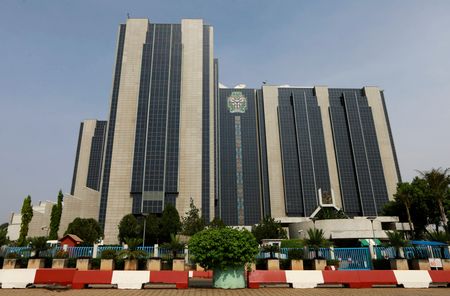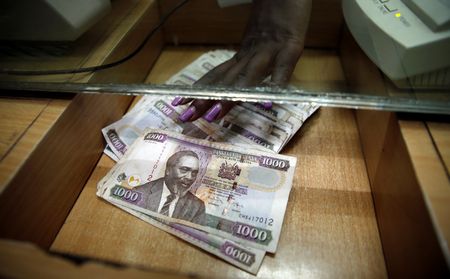By Amanda Cooper
LONDON (Reuters) -Global stocks steadied on Thursday, as a rally fuelled by Donald Trump’s spending plans for artificial intelligence infrastructure fizzled out and caution set in over what the new U.S. president’s next moves on trade might be.
Weekly data showed the number of Americans filing for unemployment benefit rose a little more than expected in the most recent week, which dented the dollar and gave stocks an uplift.
The dominant factor for markets right now is what Trump plans to do about imposing tariffs. With no new detail for now, price action was more subdued than at the start of the week.
“Obviously, it’s early days … We have seen no surprises so far,” Guy Miller, chief markets strategist at Zurich Insurance Group, said.
“What we’ve seen had largely been anticipated, if anything, some restraint was shown. So, that has allowed the financial markets to reprice to some extent, allowing bond yields to come back in again and risk assets to move higher,” he said.
U.S. stock index futures were down 0.2-0.5%, indicating a modestly lower start on Wall Street later, while U.S. 10-year Treasury yields were up 3.4 basis points at 4.633%, below last week’s 14-month high of 4.809%.
In Europe, the STOXX 600, which hit a record high on Wednesday, edged up 0.2%, as some of the selling pressure abated on technology shares, which had soared after Trump announced a $500 billion private-sector AI infrastructure investment plan.
The joint venture, which involves Oracle, OpenAI and SoftBank, initially turbo-charged a rally in global stock markets, which drew further support from upbeat earnings.
On Asian markets overnight, Japan’s Nikkei gained 0.8%. Shares in SoftBank jumped 5% following Trump’s unveiling of the Stargate AI joint venture.
In China, the government announced plans to channel hundreds of billions of yuan of investment from state-owned insurers into shares, just after Trump said he was proposing to slap a 10% punitive duty on Chinese imports.
The CSI300 blue-chip index ended the day up 0.18%, while the yuan weakened against the dollar to 7.289 in offshore trading.
TARIFF THREATS
Action in currency markets was largely subdued on Thursday after a volatile few sessions since Trump’s return to the White House, driven by his pronouncements on tariffs in the early part of the week.
Trump has said he plans to impose duties on imports from Mexico, China and Canada from Feb. 1 and has said he will apply tariffs on imports from the European Union.
In the absence of any more specifics, the dollar struggled to push higher and Thursday’s data fed into the idea among traders that the Federal Reserve may have more room to lower rates this year.
The U.S. dollar index, which measures the currency against six others, languished near a two-week low of 108.26.
The euro was steady at $1.0405, as was sterling at $1.232.
“The threat of tariffs continues to hang over markets, but the rapidly declining half life of headlines shows you the market is already numb to the shenanigans,” said Brent Donnelly, president at Spectra Markets.
Ahead of the Bank of Japan’s policy decision on Friday, the dollar rose to a one-week high against the yen at 156.76. Markets have already fully priced in a 25-basis-point rate hike at the conclusion of the meeting.
In commodities, oil prices edged into positive territory, but remained below $80 a barrel, under pressure from concern over how Trump’s proposed tariffs could affect global economic growth and demand for energy.
Brent crude futures were last up 0.14% on the day at $79.11 a barrel, having fallen earlier by as much as 0.5%, while copper prices fell 0.4% to $9,185 a metric ton.
(Additional reporting by Dhara Ranasinghe in London. Editing by Mark Potter)










